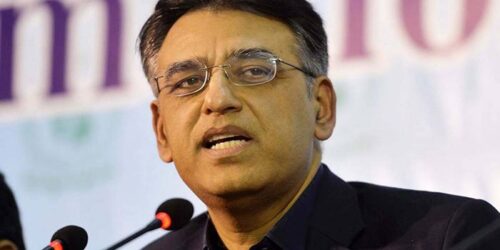According to Petroleum Division, during the first meeting of expert panels of the China-Pakistan Subgroup on Cooperation in the Oil and Gas Sector, both sides agreed that the China Petroleum Planning and Engineering Institute, along with an expert panel of the Ministry of Energy (Petroleum Division) and its organizations /Companies shall jointly study and prepare the Development Plan for Pakistan’s Oil and Gas Industry.
The main objective of the plan is to assist the Energy Working Group of China-Pakistan Economic Corridor (CPEC) in finalizing its investment for the development of the oil and gas sector of Pakistan by providing a comprehensive database of information on Pakistan’s energy profile, forecasts, and various planned and agreed energy projects.
The Plan has been prepared on the basis of data and information obtained from the Government directorates, enterprises, regulatory bodies, and think tanks and has focused on projects related to exploration and production of gas and oil imports, Thar coal to liquid, strategic oil storages, refining facilities, Underground Gas Storage (UGS) system, and construction of natural gas and oil pipeline projects.
Pakistan covers an area of 881,913 square kilometres sharing its borders with India, Iran, Afghanistan and China. Pakistan has an emerging economy with GDP of $283.3billion in 2019.
Pakistan’s E&P sector has a mix of national and international companies (24 active companies as of June 2019) operating independently. Seismic activities have increased with approximately 2,064 LKM of 2-D seismic data and 1,596 square km of 3-D seismic data acquired in 2019. Similarly, 37 exploratory wells and 67 appraisals/ development wells were spudded in 2019.
In terms of production, the average oil and gas production in 2019 stood at 89,030 BPD and 3,936 MMCFD, respectively, whereas the remaining recoverable oil and gas reserves are 568 MMBBL and 21,45 TCF, respectively.
OGDCL remains the largest exploration and production company in the country with a 45.3 per cent and 29.2 per cent share of the total annual oil and gas production in the country. MOL is the largest private and second largest oil producing company in the country with a production share of 24 per cent.
PPL pioneer of exploration and production in Pakistan is the second highest gas producing company in the country with a 19.3 per cent share.
Pakistan’s total primary energy supply stands at 86.3 MMTOE in 2018, registering an impressive growth of 8.4 per cent from 2017 due to introduction of newer energy supplies, i.e., LNG imports, renewable energy, coal and nuclear power projects. Indigenous natural gas is the biggest source of primary energy in the country with a share of 34.6 per cent (29.8 MMTOE).
LNG imports continue an increasing trend with an 8.7 per cent share of the energy mix in 2019 up from 5.6 per cent the year before. Oil remained second with 31.2 percent (26.9 MMTOE) energy supply, showing a decline of 1.6 per cent from last year supply of 27.36 MMTOE.
Minister for Railways, Azam Swati, will give a report on delay in dry docking of EETPL’s FSRU whereas FIA will submit report on the status of inquiry on petroleum crisis.
FIA has recently arrested some officials of OGRA and Petroleum Division in this regard.







